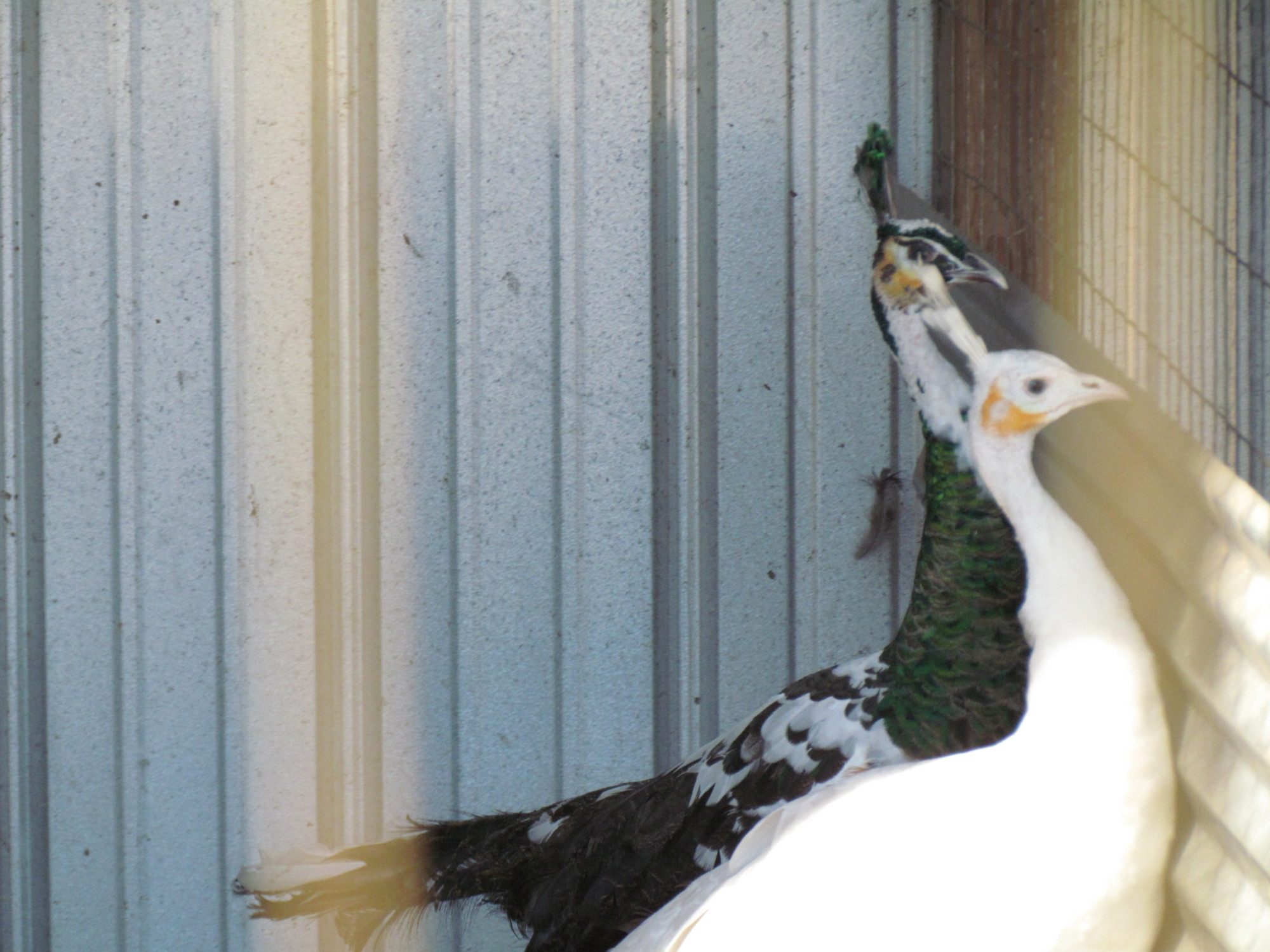Take photos of the parents when you see them.
The blue area shows up less in spaldings and even some green peafowl don't have much blue on their face - Also for some reason the blue can be hard to make show up in photographs. The yellow shows up more on spaldings - it can show up brightly on some spaldings, and fain on others. I had three white spalding sibblings (1 I sold but I still have the other two) and even though they were all brother and sisters, one has an almost orange face, the other one has a yellow face, and the third, the peacock, has a faint yellow face. There is variation even in siblings.
Spalding peahen

Above peahen's brother.

Spalding white at Rocking BAB Ranch

The blue area shows up less in spaldings and even some green peafowl don't have much blue on their face - Also for some reason the blue can be hard to make show up in photographs. The yellow shows up more on spaldings - it can show up brightly on some spaldings, and fain on others. I had three white spalding sibblings (1 I sold but I still have the other two) and even though they were all brother and sisters, one has an almost orange face, the other one has a yellow face, and the third, the peacock, has a faint yellow face. There is variation even in siblings.
Spalding peahen
Above peahen's brother.
Spalding white at Rocking BAB Ranch
Last edited:





